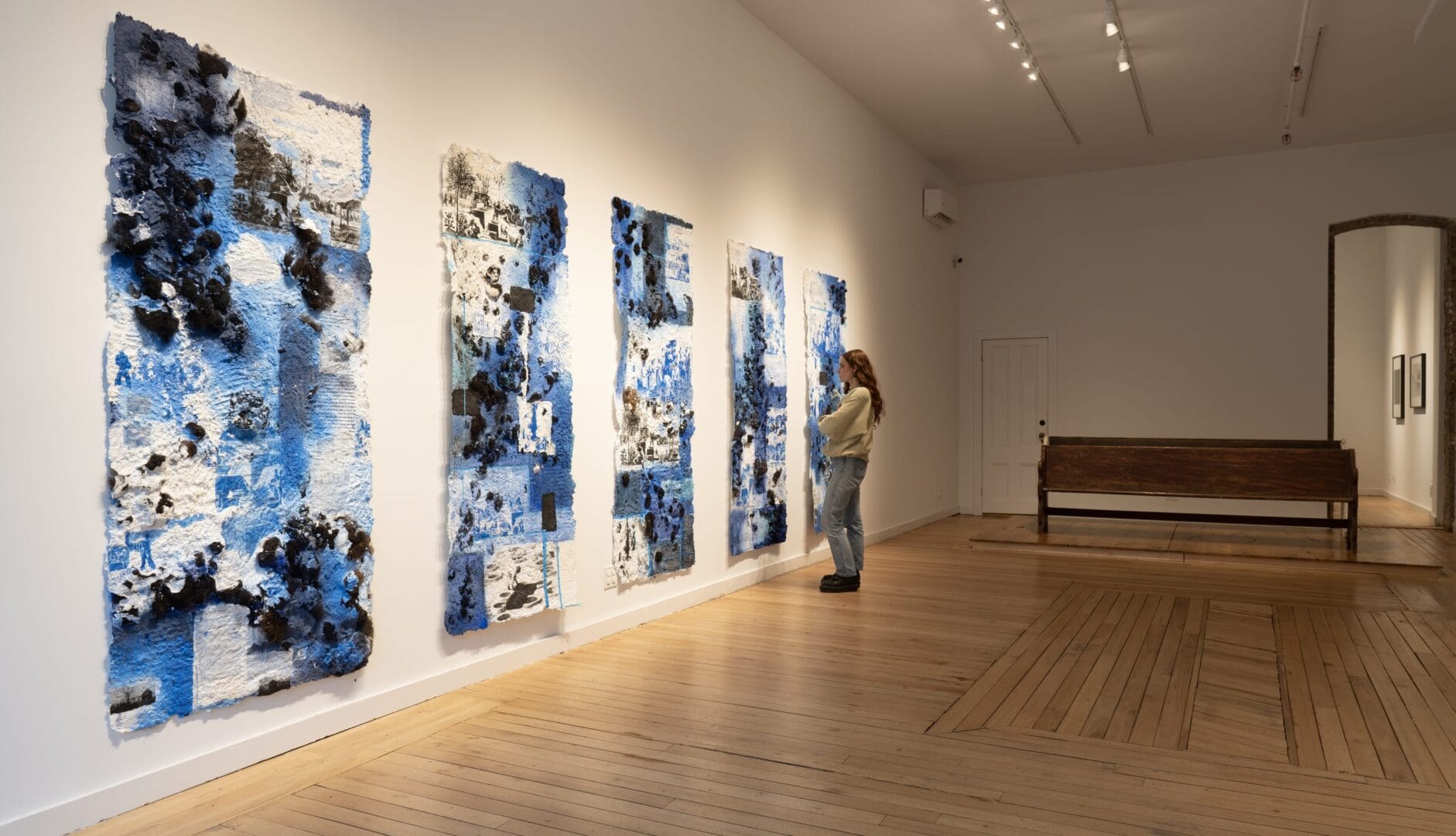
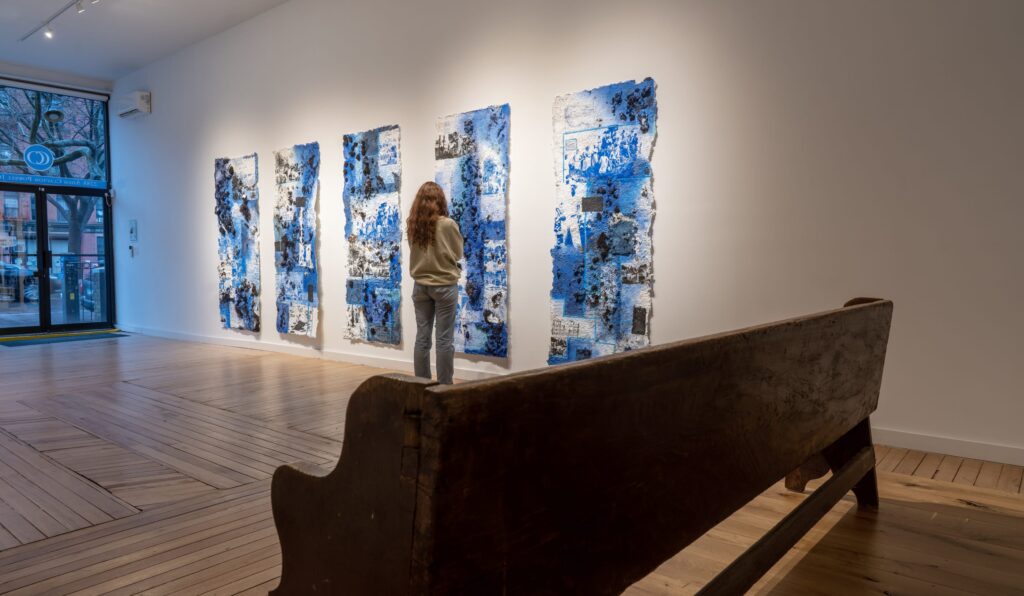
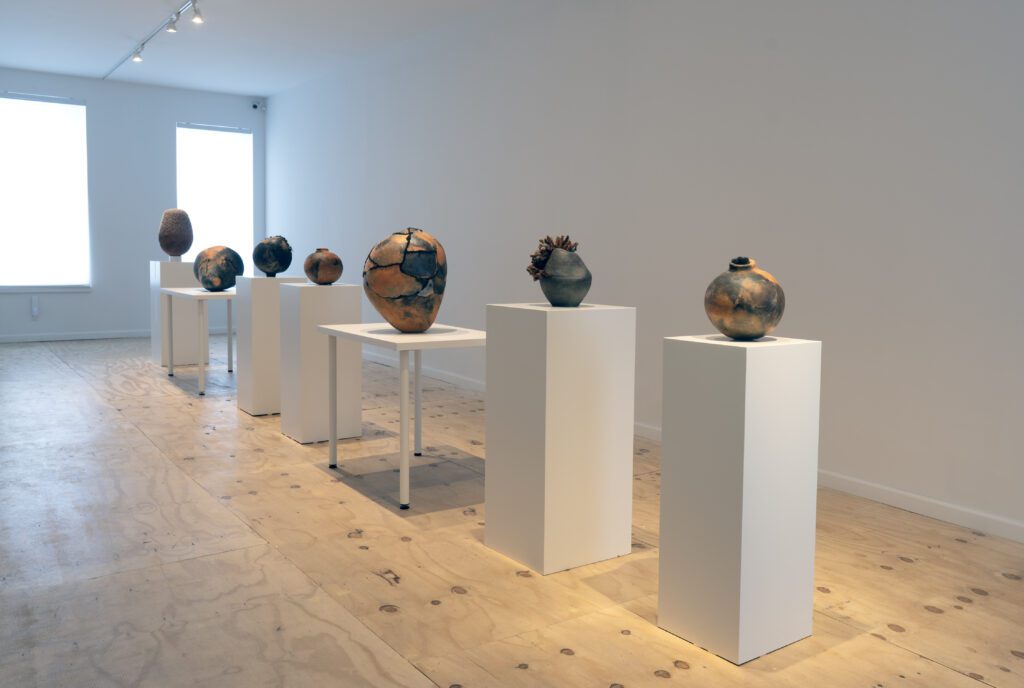
In her solo exhibition, Remains, at Claire Oliver Gallery, multimedia artist Adebunmi Gbadebo combines her ceramics and papermaking practices to explore her familial heritage. Much of Gbadebo’s work centers around True Blue Plantation, the rice and indigo plantation where her ancestors were enslaved in Fort Motte, South Carolina. Remains continues Gbadebo’s engagement with her history, with a continuation of her signature papermaking series entitled Productions—using indigo, rice paper, cotton, and hair—as well as ceramic works crafted using a traditional African coiling technique and clay made from the earth taken from gravesites at the plantation.
Materiality is essential to Gbadebo’s work. “Throughout all the kinds of processes that I enact in my practice, I really am thinking about how I carry memory and my own body working with materials that are connected to my ancestry,” she says, referring to her use of the site-specific clay, indigo, and human hair. “This is my way of directly putting our black bodies and our DNA, our ancestry, back into the land, back into the material, back into the work.”
Productions specifically focuses on the production of indigo on Southern plantations, as well as the ancient indigo dyeing tradition in Kano, Nigeria. The production on these plantations, including True Blue, was violent and toxic, leading to a horrifically low life expectancy for the slaves forced to labor there. Gbadebo discusses the historic European-disseminated narratives of indigo—its use in textiles for the wealthy, as well as its art-historical representation: “whether you’re in an art history class or you’re a visitor at a museum and you see beautiful paintings of European kings and emperors, and beautiful indigo silk robes which were a statement of their wealth, it’s all connected to the slave trade, to slave production.” While the visual representation of indigo has historically been connected to Western luxury, these narratives have systematically omitted the reality of its production.
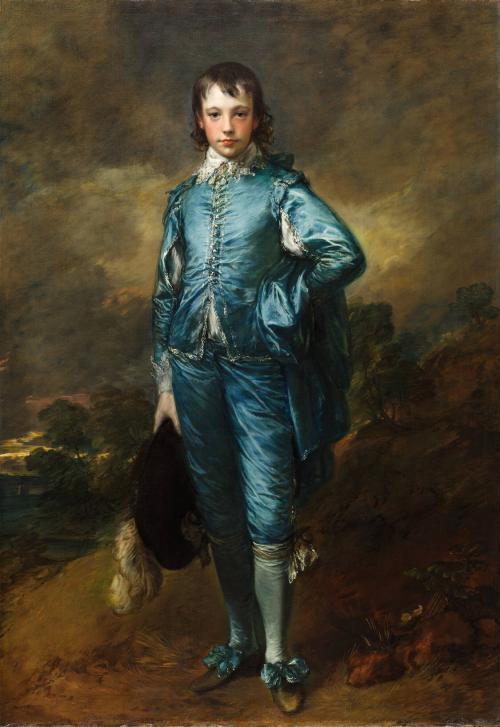
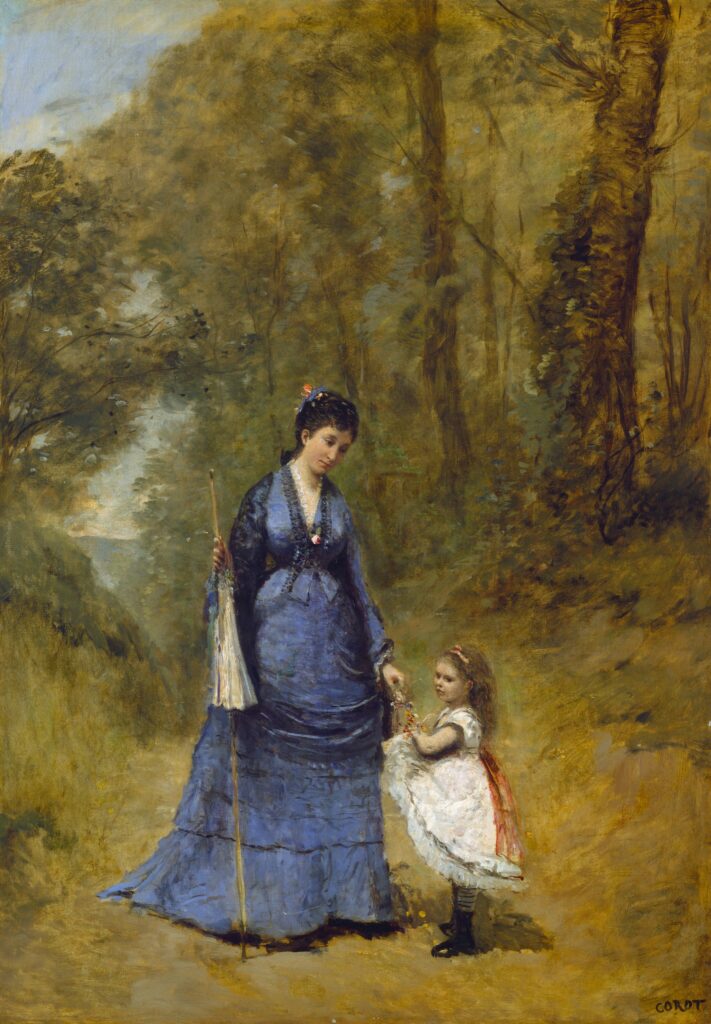
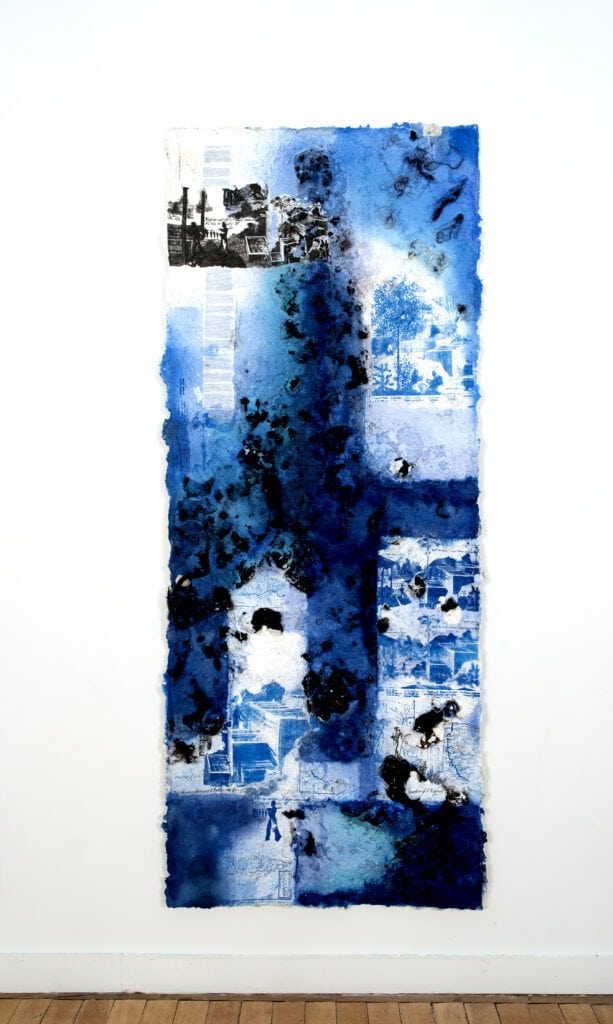
The paper works in Productions all include archival images of indigo production in the American South, as well as the indigo dye pits in Kano, Nigeria—some of the oldest dye pits in the world. Gbadebo combined these images to draw attention to the presence of the ancient tradition of indigo dyeing in Nigeria, and the fact that this tradition predates the institution of slavery in the United States. She wants to emphasize that African peoples were engaged with the art form far beyond these plantations, which allowed for the plantations’ economic success. “It really complicates or challenges this narrative that we were brought here with no kind of history and culture and knowledge and intellect and artistry.” One of the images in Production 3 is of Gbadebo’s own ancestor, William Ravelle, who produced indigo on True Blue Plantation.
Gbadebo aims to “think about blue differently.” She uses the color as an entry point through which to engage the work—its observable beauty makes the initial participation with the art more accessible. Beyond this beginning interaction, the viewer is then asked to confront the truth about the color’s history and to think about the violence and politics associated with it. Gbadebo’s intention is to “have us think through the history of blue more critically.”
Remains by Adebunmi Gbadebo is on view at Claire Oliver Gallery through March 11, 2023, before beginning a museum tour.
Claire Oliver Gallery is located at 2288 Adam Clayton, Jr. Boulevard in Harlem.
Photography credit: Claire Oliver Gallery and Adebunmi Gbadebo.
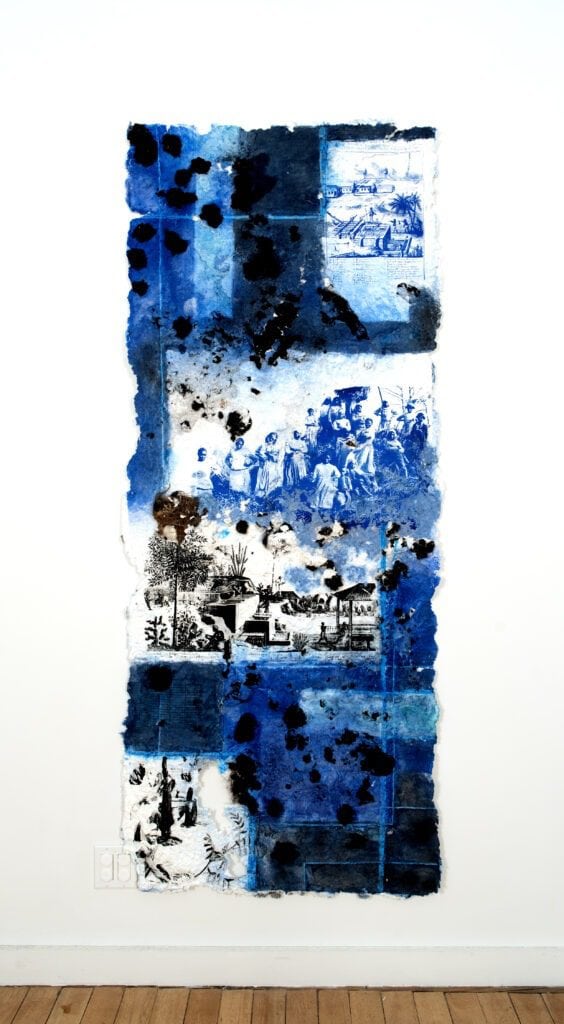
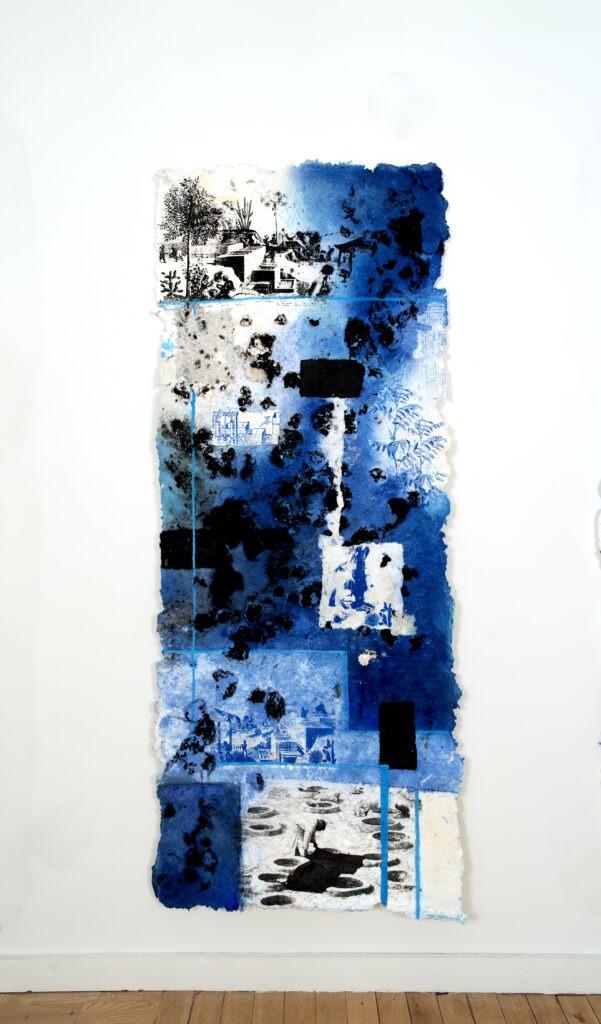
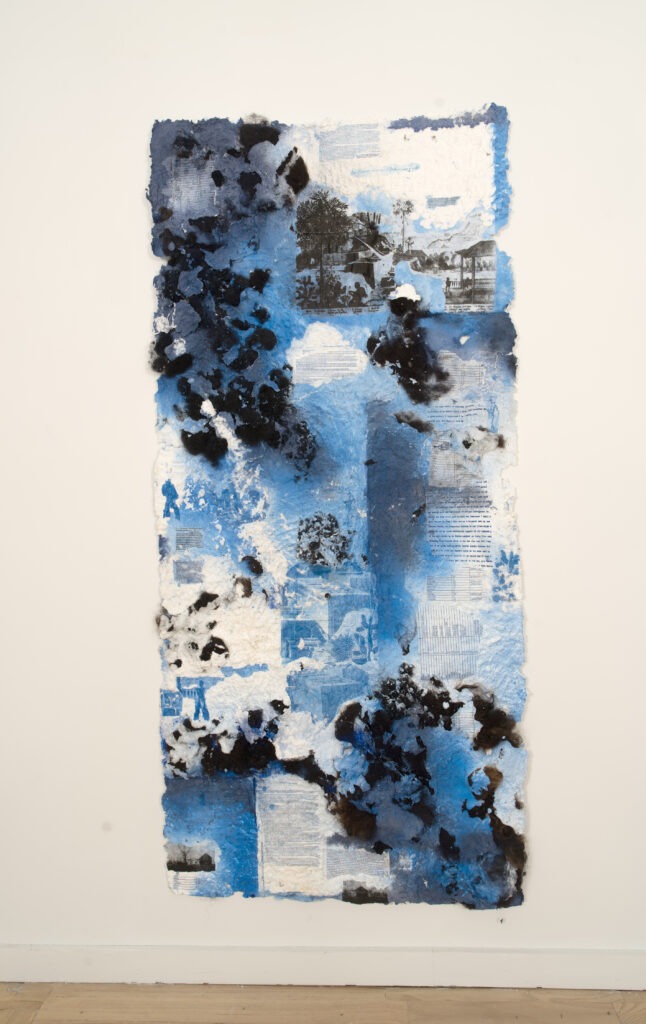
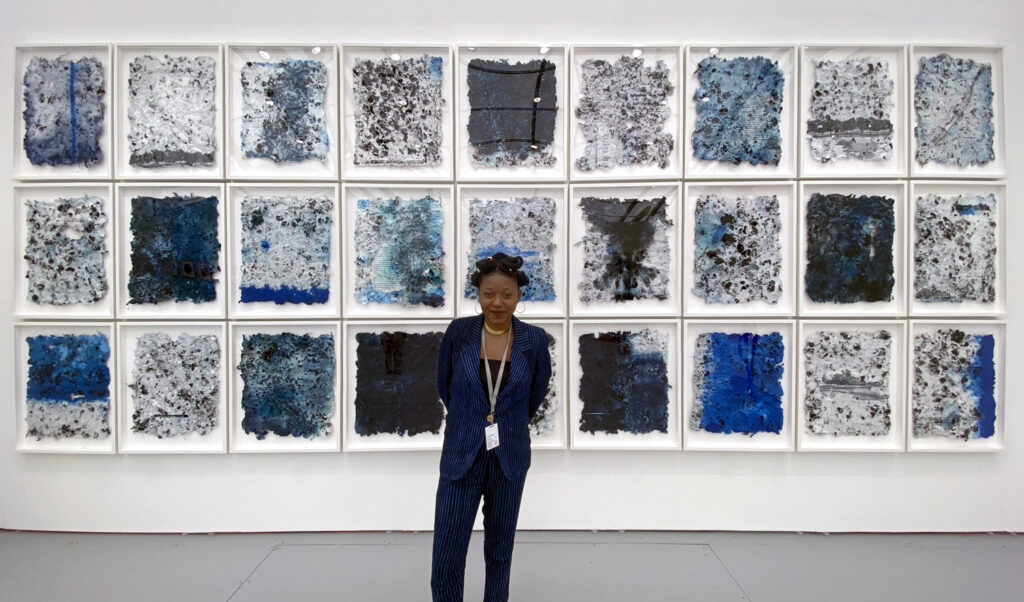
Adebunmi Gbadebo (Ah-dae-bu-mee Bha-dae-bo) is a multimedia artist who uses culturally and historically imbued materials to investigate the complexities between land, matter, and memory on various sites of slavery. Centering on deeply resonant materials like indigo dye, soil hand dug from plantations, and human Black hair collected throughout the diaspora, Gbadebo has formed a visual vocabulary entirely her own. The resulting works tend to carry the stories of ancestors, families, and individuals either long overlooked or too closely surveyed. Born in New Jersey and based between Newark and Philadelphia, Gbadebo earned her BFA at the School of Visual Arts, NY, and a certification in Creative Place Keeping at the New Jersey Institute of Technology.
Adebunmi’s ceramic works were recently showcased in, Hear Me Now: The Black Potters of Old Edgefield, South Carolina at the Metropolitan Museum of Art, an exhibition that predominantly featured the work of enslaved peoples, a first in the Museum’s history. The show will tour nationally and is currently on view at the Museum of Fine Arts, Boston. She is currently a 2022 Pew Fellow and Artist in Residence at the Clay Studio in Philadelphia. Gbadebo’s work has been featured in notable publications, including The New York Times, Hyperallergic, Hypebeast, Brooklyn Rail, Forbes, and The American Craft
Council Magazine. Gbadebo has been broadcasted on BBC Newsday and has given talks at the Museum of the African Diaspora, the Metropolitan Museum of Arts, and the Newark Museum of Art.
Gbadebo’s works are included in the permanent collection at the Smithsonian National Museum of
African Art, Smithsonian National Museum of African American History and Culture, The Metropolitan Museum of Art, the Boston Museum of Fine Arts, the Minneapolis Institute of Art, the South Carolina State Museum, the Newark Museum of Art, amongst others. Gbadebo’s work has been exhibited nationally and internationally at the Dhaka Art Summit, Bangladesh, and the 1-54 African Art fair, London.
She also serves as the Community Engagement Apprentice for a new building in Newark, NJ, to replace a statue of Christopher Columbus in the former Washington Park, newly named Tubman Square. The monument opened to the public in March 2023. Gbadebo is currently working with students and faculty at Clemson University to create a sculpture that honors the 667 enslaved and Black laborers who transformed Fort Hill Plantation into Clemson University and whose unmarked burials were recently identified on the campus grounds.
